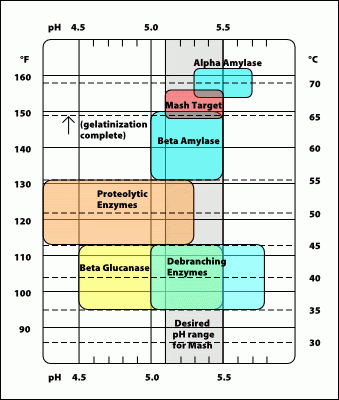About Koushika Viswanath
Koushika Viswanath is a well-recognised craft brewer amongst the Indian craft brewing fraternity for his gig in Brewsky J.P. Nagar, Bangalore; Big Brewsky Sarjapur, Bangalore; Big Pitcher, old airport road, Bangalore; and currently with The Grid and Caldera Craft brewery in Topsia, Kolkata.
He holds a Master’s degree for brewing and distilling from Heriot Watt University, Scotland. He believes that only failed home-brewing experiments can help deduce and learn the art of brewing. Although it’s an expensive hobby to follow, he would advise all beer lovers to try brewing once in their lifetime and understand how much fun it is to tinker with the equipment, raw materials, etc. since it will reward you with beer at the end of the experiment. The first brews are always dodgy when one starts their brewing journey and advices the upcoming or current homebrewers to have a ton of patience and maintain strict hygiene, which will reap rewards slowly but surely.
He is currently associated with a craft beer brand called ‘Caldera’ which is well known amongst the craft beer aficionados of Kolkata. ‘Caldera’ craft beer is still served at ‘The Grid’ which is a multiple award winning and reputed brewpub for its excellent quality craft beer, food, cocktails and service. He believes that the trick for any brewpub to become popular is ‘everything mentioned above’ and not rely solely on their craft beer as per his experience. So associating oneself to a brand with a vision is important for a steady craft brewing career and this is his only advice to other and upcoming craft brewers in India.


How does water affect the beer quality?
Water is one of the major components in brewing beer. One of the common mistakes a rookie brewer can do is to ignore the importance of water in brewing. Water from multiple sources can result in a beer, but the question is whether it’s drinkable or not. Poorly treated water, when used in brewing may result in a beer tasting medicinal, metallic/rusty or even astringent.
Water is comprised of different minerals like Calcium, Magnesium, Sodium, Sulfate, Chloride, Bicarbonate etc., with different ionic charge. They react while brewing and the ratio’s change based on the type of body or dryness you want in the beer. Knowing the type and quantity of salts present in your water helps you understand the critical factors that affect the quality of beer when it’s used for brewing. Sometimes, even local flora & fauna, altitude and the weather also affects the quality of water.
| Mineral | Cation (positive) | Anion (negative) | Properties |
| Calcium | Ca+2 | It is the principal ion that determines hardness, promotes clarity, flavor and stability in the finished beer. | |
| Magnesium | Mg+2 | This contributes to the hardness and mash pH but not as much as Calcium | |
| Sodium | Na+1 | Does not contribute to the hardness. It is benign, but at larger concentrations it can cause the beer to taste minerally or metallic | |
| Bicarbonate | HCO3-1 | Contributes to the total alkalinity of the water and raise the mash pH. This dissolves easily in the water. | |
| Carbonate | CO3-2 | Contributes to the total alkalinity of the water and raise the mash pH. Carbonates require carbonic acid which occurs from CO2 to dissolve it accurately. | |
| Sulphate | SO4-2 | It accentuates hop bitterness, making it drier and crisper. Weakly alkaline and doesn’t contribute to the total alkalinity of the water. | |
| Chloride | Cl-1 | It makes the beer taste fuller and sweeter, it has the opposite effect of sulphate. In fact, the sulfate-to-chloride ratio is a good way to gauge the effect of the brewing water on the balance of the beer. For example, a sulfate-to-chloride ratio of 2:1 or higher will tend to give the beer a drier, more assertive hop balance, while a beer with a ratio of 1:2 will tend to have a less bitter, rounder, and maltier balance. However, this effect is just like salting and seasoning your food; it helps accentuate the flavors that are there but will not fix a bad recipe. Finally, you should understand that chloride is not the same as chlorine, which is used as a disinfectant. The concentrations of each are unrelated to the other. |
How to choose ideal water for brewing?
If you consider brewing as a hobby, the best way to treat your water without getting too deep into the technical parameters is to source it from your local microbreweries. Brewers treat their water very well and often change or adjust the filters to ensure the RO water is consistent.
De-mineralized water or distilled water can be optional too. Avoid using tap water before understanding its water profile. If the water tastes good on your palate, doesn’t necessarily be good for your beer, since the salts in the water which makes it taste sweeter is mainly from sodium bi carbonate, especially if it is coming from a reputable water processing unit. Water processing plants usually strip the minerals from the water and add minerals to have a steady profile. Some artisanal water sources use the source water and just filter out the visible impurities. As mentioned earlier, it is easier to design the water which has no mineral content than using an unknown source water with unknown mineral content.
Once you have the desired RO water, start brewing small batches of a beer by small additions of salts, usually 1/4th of a teaspoon of Calcium Chloride and 1/4th teaspoon of Calcium Sulphate should do the trick for malty beers of 10L batch. For hoppier beers go with 1/4th teaspoon of Calcium Chloride, 1/4th teaspoon of Calcium Sulphate and 1/4th teaspoon of Magnesium Sulphate but focusing on adjusting the mash pH to a desired value. This can be done by the addition of salts or food grade acid into your mash. Target a mash pH between 5.30 to 5.50 (as mentioned in the graph below). Higher pH affects the enzymatic conversion of sugars during the mash and it may extract more tannins from the grain husks resulting in an astringent beer. Lower pH results in beer that’s more acidic and drier.

To lower your mash pH, add desirable amounts of Calcium Sulfate (Gypsum), Calcium Chloride, Lactic acid or Phosphoric acid. Conversely, to raise your mash pH, add desirable amounts of Calcium Carbonate, however, Calcium Carbonate doesn’t dissolve well in the water since it needs the intervention of CO2. An alternative would be using Sodium bi Carbonate to increase the pH or make the water more alkaline.
Further, depending upon the beer styles, brewers add –
- Higher ratio of Calcium Sulfate and Magnesium Sulphate in hop forward beers
- Higher ratio of Calcium Chloride in beers with higher malt character
- Calcium Carbonate or Sodium bicarbonate is used while brewing darker beers in areas of soft water. Often the roasted malts drop the pH in the water and this salt counteracts this affect by adding alkalinity (raising the pH) to the water.
If brewing is more than just a hobby, get your local water tested time to time then make a file to understand its consistency. It is always good to get your water tested from a reputed laboratory. Invest in a good quality pH meter which has 2 units after the decimal point (example: The pH meter should read 5.50 or 5.48 and not 5 or just 5.4) and track the mash pH in every step of the mashing process until the end of the mash. It’s best if you can adjust the mash pH as quickly as possible before you add the grist into the strike water and not tinker on post the mashing step. The results will fluctuate and you will not be able to control the pH fluctuations. Try not to change a lot of things in the recipe or the process when you redo it. While trying to perfect the art of brewing, it is easier to focus on changing one parameter at a time and understand its impact in the final beer rather than changing multiple things at once.
The pH of final beer shouldn’t drop beyond 4.0 for standard beers which are at 4.1 – 4.5 pH typically. In case it drops then it will taste acidic but that isn’t an off flavor. So don’t worry too much on it, just homebrew and stay calm.
At the end, don’t forget to have fun with beer and brewing!
Cheers!
Koushika Viswanath
Book recommendations
Water book – Brewing elements series
How to design great beers? Ray Daniels
How to brew? John Palmer
Email: headbrewer@jointhegrid.in
Click here to get your customized Caldera beer recipe kit by The Grid.

This topic is as complicated as trapping the Hops aroma! It is the single largest share material in beer. If you get this you probably can get everything right. Especially Sulphate and chloride !!
Absoutely, the joy of brewing is to always continue learning and sharing knowledge.